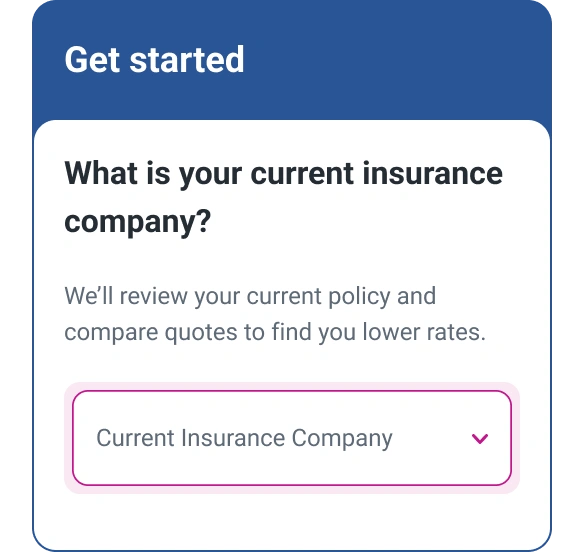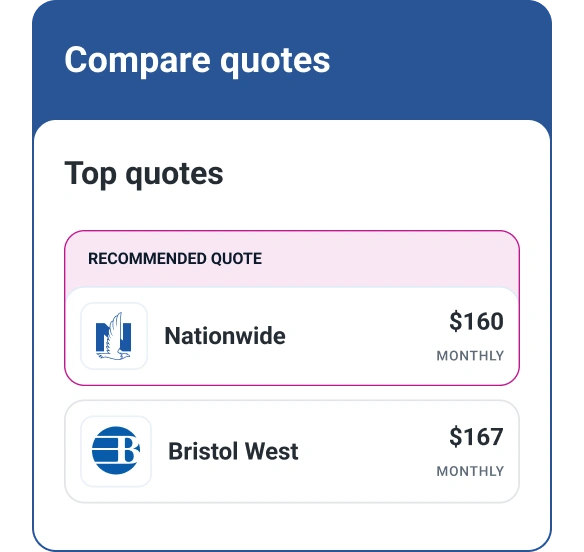How to Get the Best Car Insurance for Teens and Drivers Under 25
Quick Answer
You can get the best car insurance for your teenage driver by comparing quotes, looking for discounts, dropping nonessential coverage, raising your deductible and choosing the right car for your child.

Adding a new teen driver to your car insurance policy can spike both your stress level and your premiums. Teen drivers cost a lot to insure—an average of $3,512 annually, according to 2025 Experian data. That's because teens are more likely to be risky drivers, with accident rates almost four times those of older drivers, according to the Insurance Institute for Highway Safety (IIHS).
To get the best car insurance for your teen and still save money, try shopping around, increasing your deductible, dropping unnecessary coverage and taking advantage of discounts.
Should I Buy Separate Car Insurance for My Teenager?
Adding a teen to your existing car insurance policy is usually cheaper than buying them a separate policy. As an older, more experienced driver, you'll typically qualify for lower premiums than your teen driver would pay on their own. Being married, a homeowner, or buying home and auto insurance from the same company can also earn you discounts your teen couldn't get.
However, you might consider buying your child separate car insurance if they have had multiple accidents or moving violations. A car insurance company specializing in high-risk drivers could provide the coverage your teen needs without impacting your own insurance premiums.
How to Add Your Teen to Your Car Insurance Policy
Adding your teen to your car insurance policy is easy to do.
- Contact your current insurance company. Request a quote for adding your new driver to your policy. Your insurance agent can also recommend adjustments to your policy (such as adding roadside assistance coverage to protect your young driver, or accident forgiveness coverage to protect your wallet) and suggest ways to lower the cost.
- Shop around. Get quotes from other insurance carriers for the same type and amount of coverage your current company recommends. You can get quotes at insurance carriers' websites, by calling insurance companies individually, by working with an independent insurance agent or by using a car insurance comparison tool such as Experian's.
- Compare your options. Are you considering switching insurance companies to save on insurance for your teen? In addition to cost, be sure to evaluate the new provider's reliability, customer service and financial stability. Check online customer reviews and financial ratings from A.M. Best, Fitch, Moody's and Standard & Poor's.
- Add your teen to your policy. To do this, you'll typically need the vehicle identification number (VIN) for your teen's car, your teen's driver's license number and an estimate of how many miles they'll drive per year.
- Cancel your old car insurance, if necessary. If you're switching to a new insurance carrier, make sure your new policy is in force before canceling coverage with your previous company.
How Much Does It Cost to Add a Teenager to My Car Insurance Policy?
On average, adding a teenager to your car insurance policy increases your premiums by $3,512 per year, or about $293 per month, according to Experian data. Whether your teen is a boy or girl impacts your premiums too: Boys generally cost more to insure.
Either way, the good news is that your premiums should decrease as your child gets older. Here's a closer look:
| Female | Male | |
|---|---|---|
| Ages 16-19 | $3,307 | $3,717 |
| Ages 20-24 | $3,047 | $3,143 |
Source: Experian
Although age is just one of many factors insurance companies consider when setting rates, car insurance premiums generally decrease as you get older. Your child may be living on their own with their own car insurance by age 25, but if they're still on your policy, you'll likely see your premiums shrink.
How to Save Money on Car Insurance for a Teen
To keep the cost of car insurance for a teen from breaking the bank, try these tips for saving money.
- Choose the right car. The vehicle your teen drives impacts the cost of car insurance. A car that's rated highly for safety, isn't popular with thieves and has built-in anti-theft or safety features can be more affordable to insure.
- Cancel nonessential coverage. You can help offset the cost of your teen's coverage by eliminating car insurance extras such as coverage for rental cars or replacement rentals when your car is in the shop. Dropping collision and comprehensive insurance if your teen drives an older car could also reduce your premiums.
- Raise your deductible. Your car insurance deductible is the amount you're responsible for paying when you file a claim. Increasing the deductible can lower your premiums. Just make sure you could handle the higher deductible in case of a claim.
- Get a good student discount. Many car insurance companies offer discounts if high school or college students maintain a grade point average of B or better. Your student could also get discounts for completing a driver safety or driver education course approved by the insurance carrier.
- Adjust coverage when your teen's away from home. Is your child away at college? Car insurance companies often offer discounts if your student lives on campus without a car during the school year and drives only during school breaks.
- Take advantage of telematics. Usage-based car insurance plans use your teen's smartphone or a device in their vehicle to monitor their driving habits and mileage. If your teen's a safe driver and doesn't log lots of miles, these plans could save you money.
- Go online. Some car insurance companies offer discounts for getting quotes online, starting or completing the purchase process online or opting out of paper-based billing.
- Maintain good credit. Car insurance providers in most states can review your credit-based insurance score when setting insurance rates; higher scores generally indicate you're a lower-risk customer and could save you money. Your credit-based insurance score isn't the same as your credit score, but the two are usually closely correlated. Checking your FICO® ScoreΘ and working to improve it if necessary could qualify you for lower premiums.
Learn more: How to Save on Car Insurance
The Bottom Line
Insuring a teenage driver can be costly. However, the premiums should decrease as your teen gets older if they keep a clean driving record without accidents or moving violations. Taking some time to comparison shop for car insurance each year can help you get the best possible price.
Experian's free car insurance comparison tool can ease the stress of shopping for auto insurance. Input your information once to get personalized quotes from top insurance carriers and find the coverage your teen needs at a cost you can afford.
Don’t overpay for auto insurance
If you’re looking for ways to cut back on monthly costs, it could be a good idea to see if you can save on your auto insurance.
Find savingsAbout the author
Karen Axelton specializes in writing about business and entrepreneurship. She has created content for companies including American Express, Bank of America, MetLife, Amazon, Cox Media, Intel, Intuit, Microsoft and Xerox.
Read more from Karen

